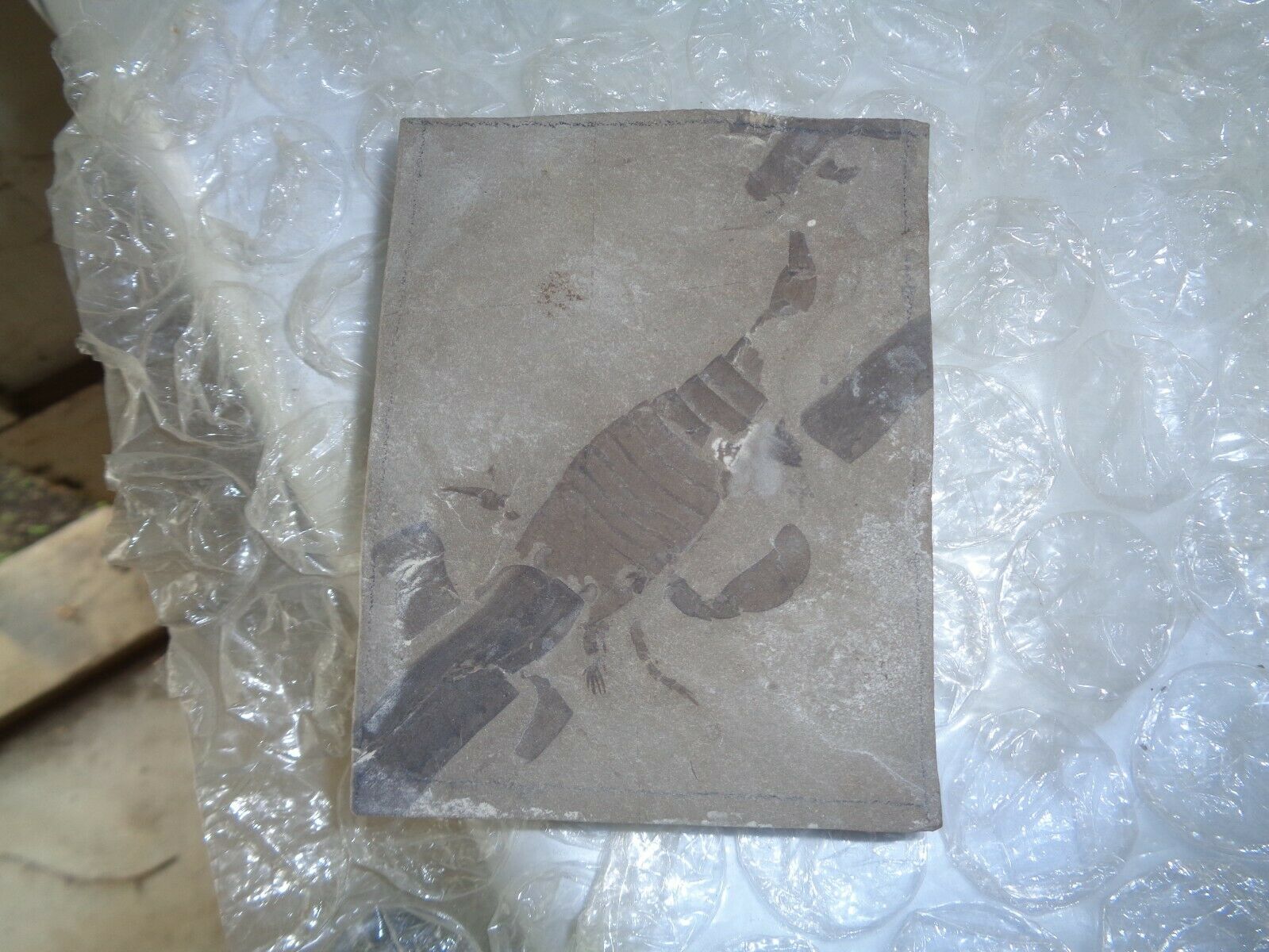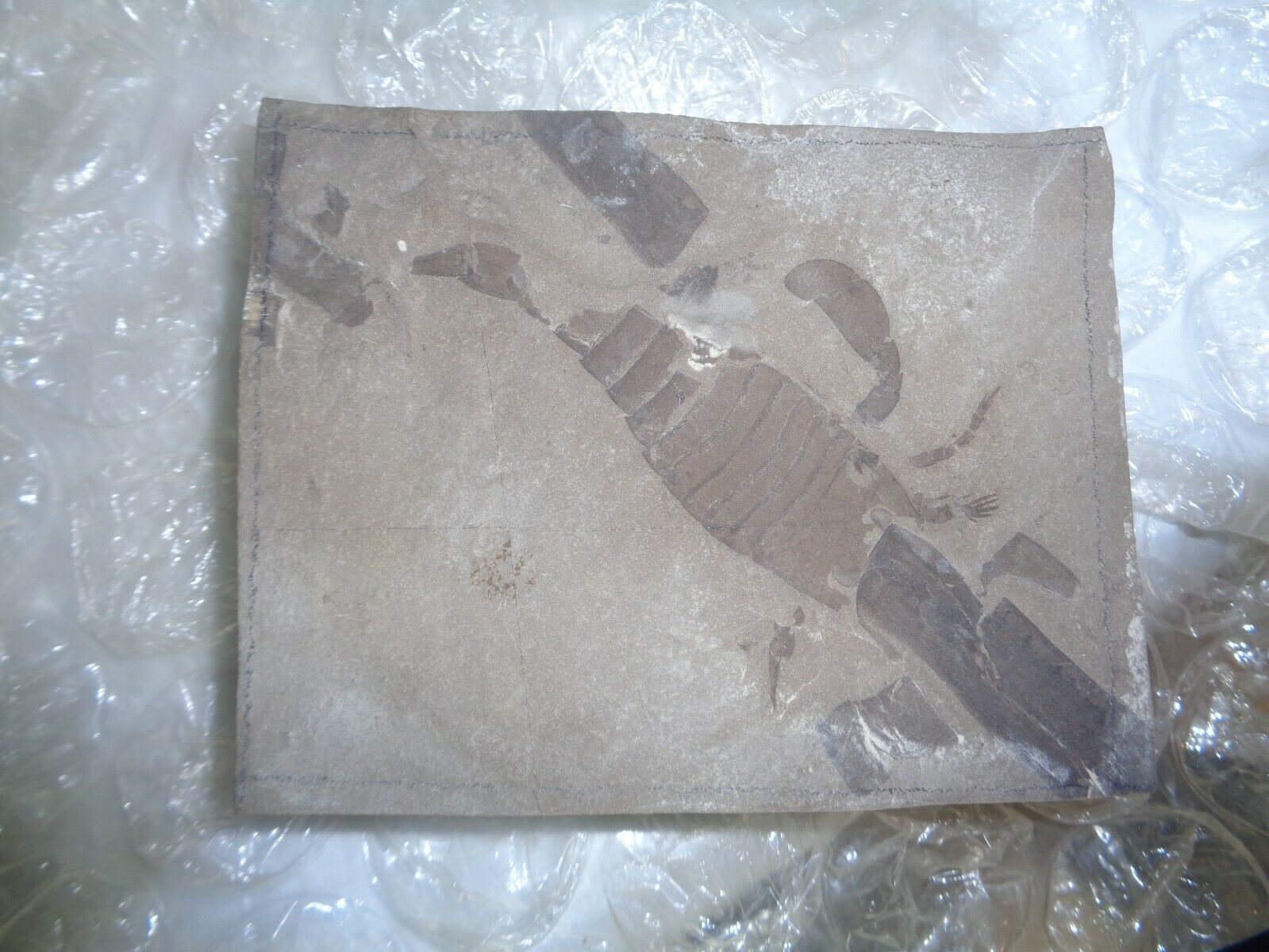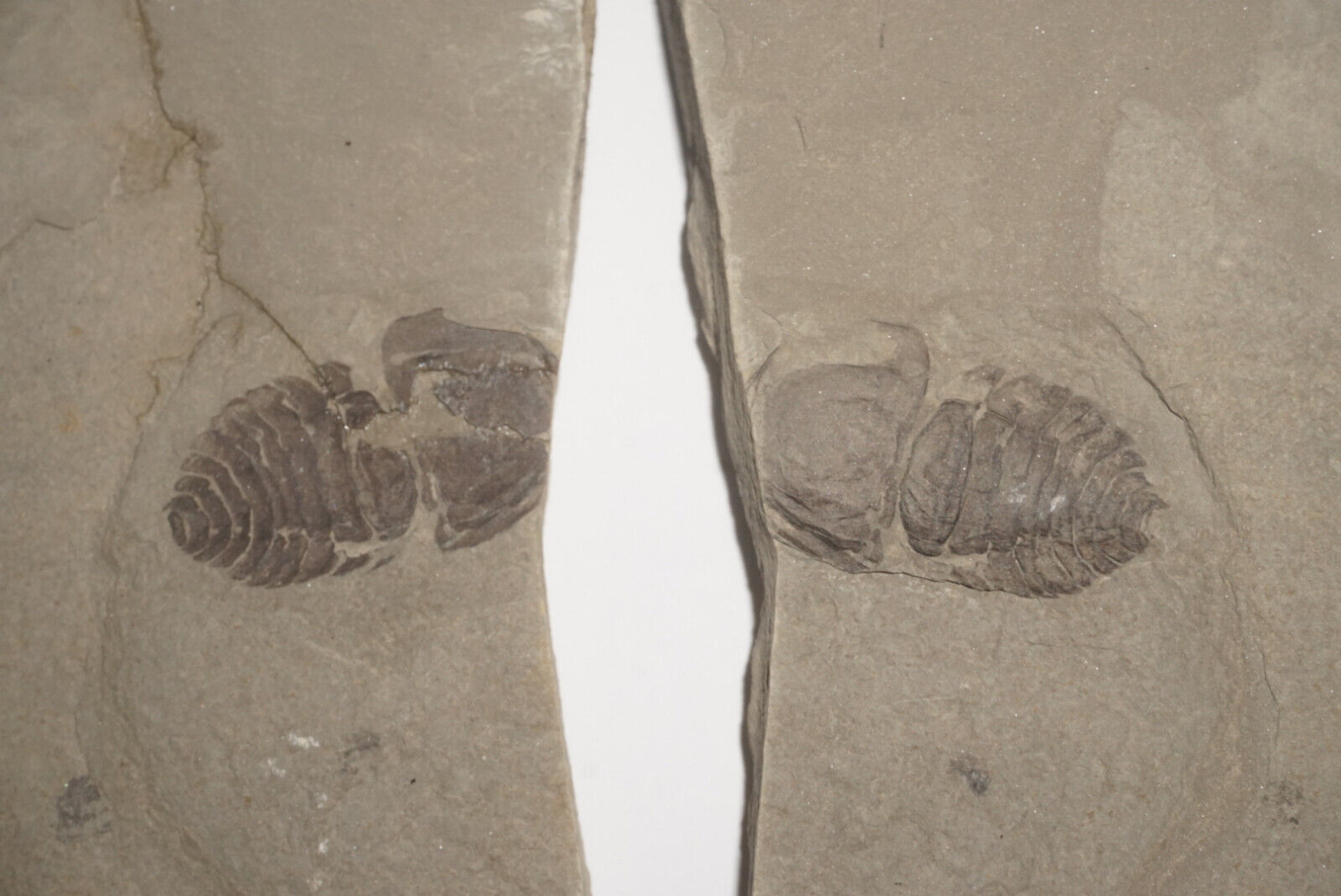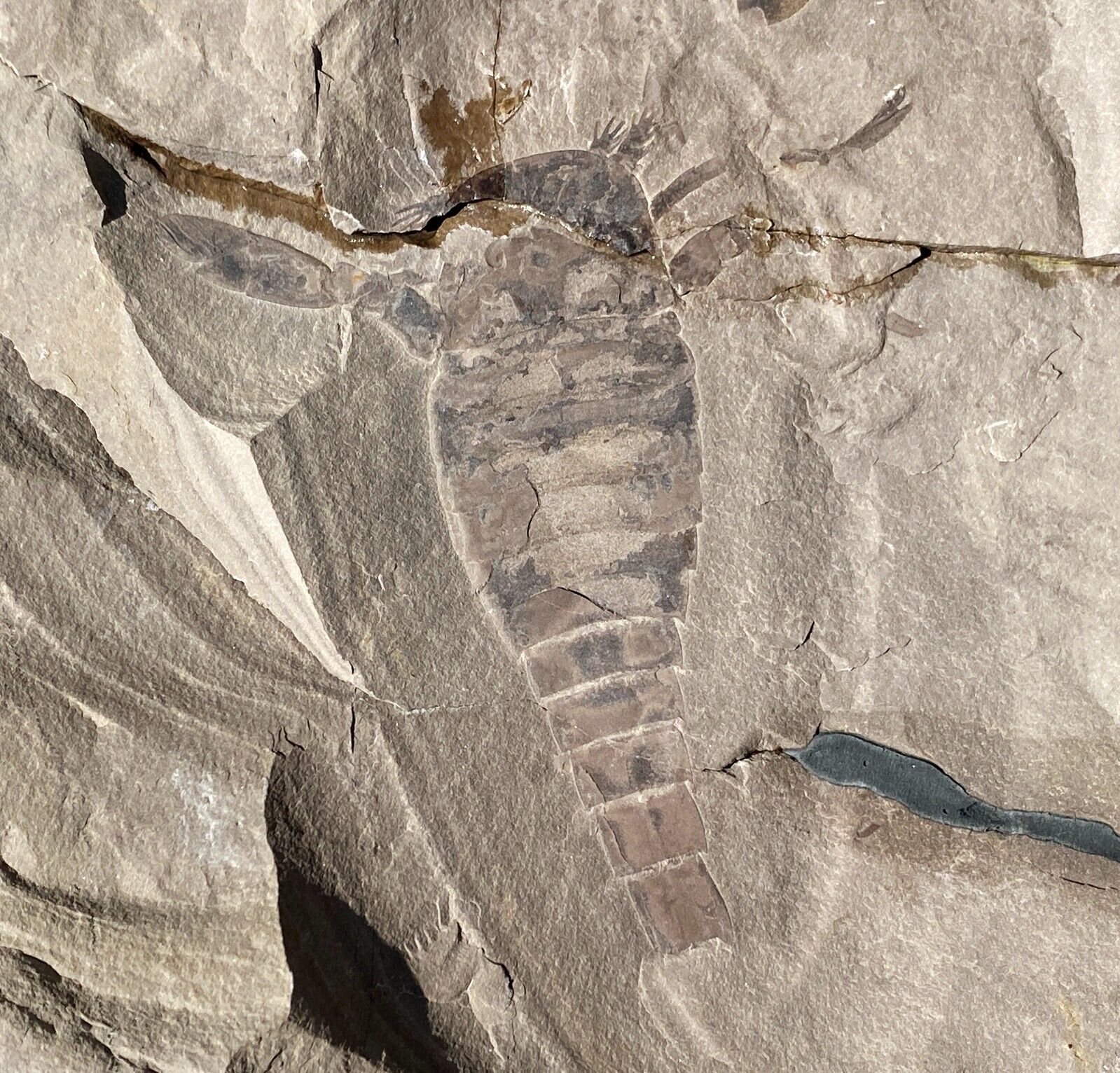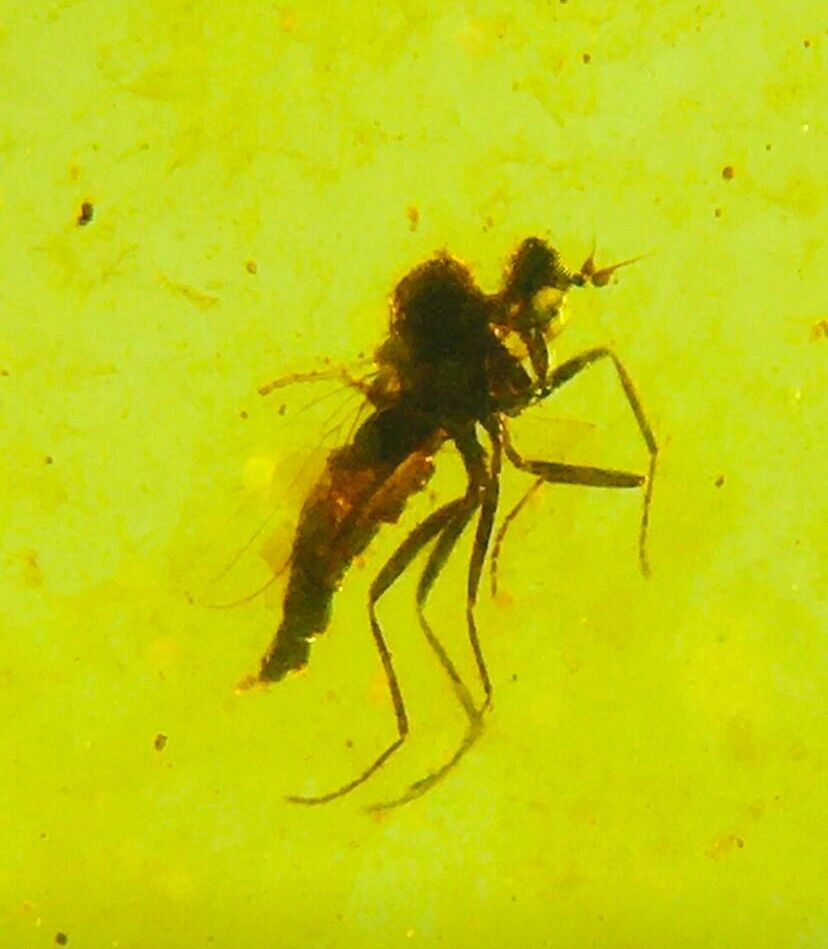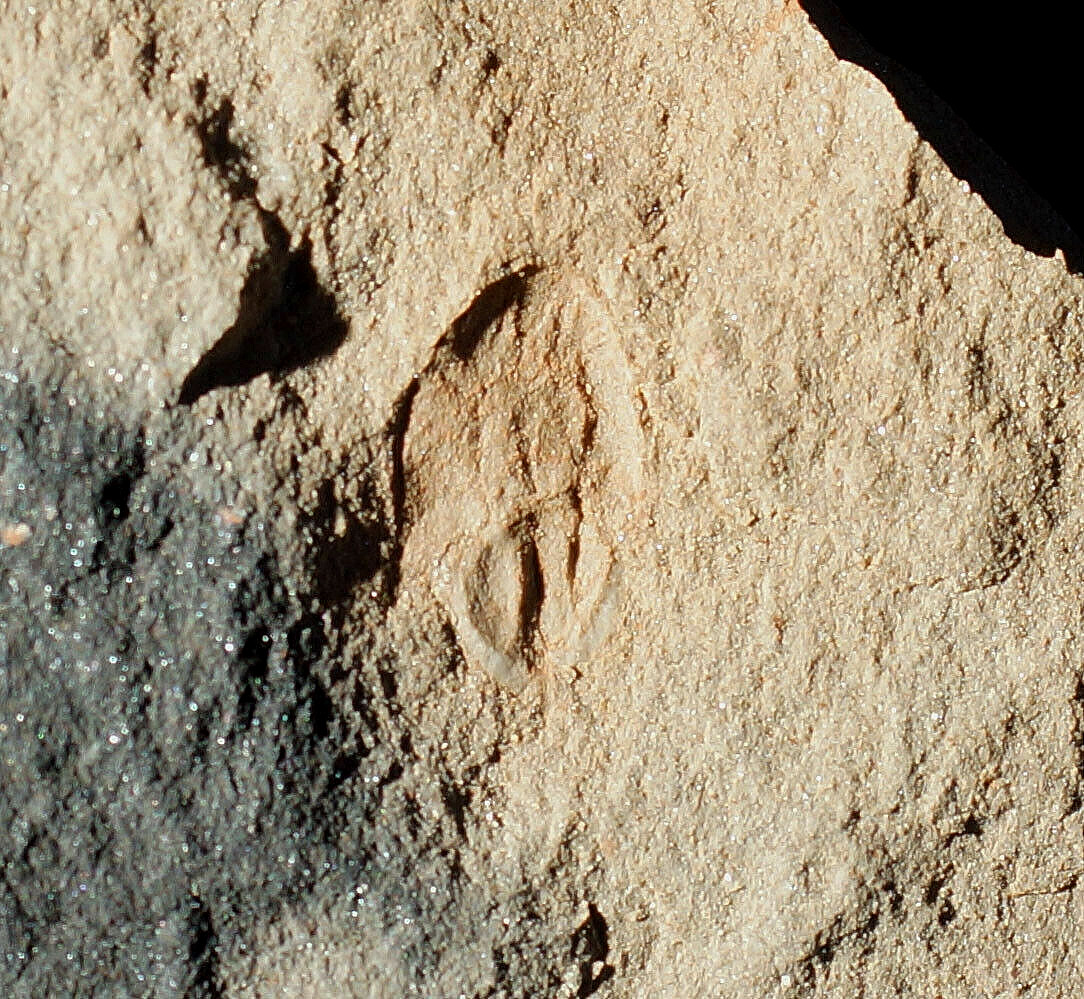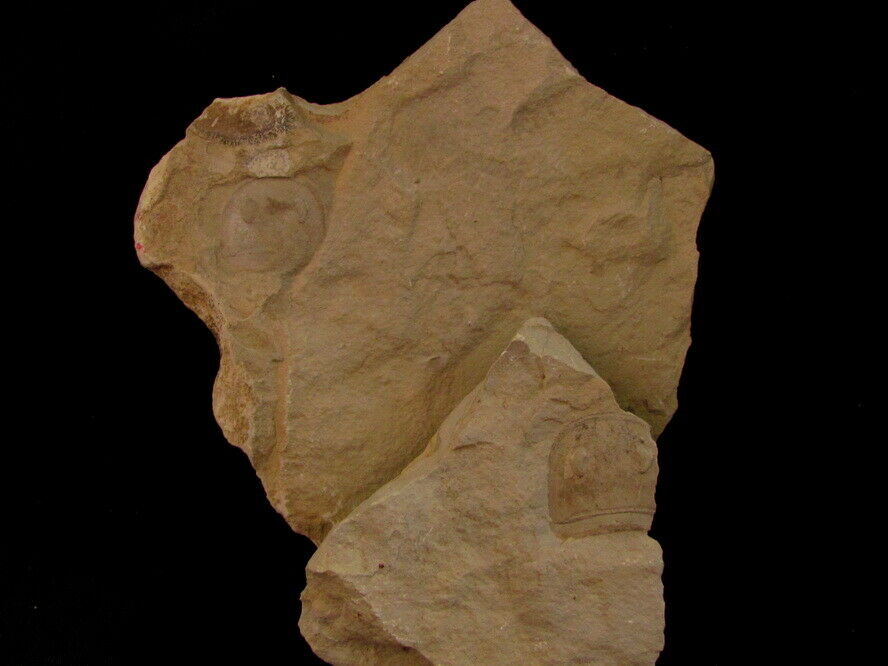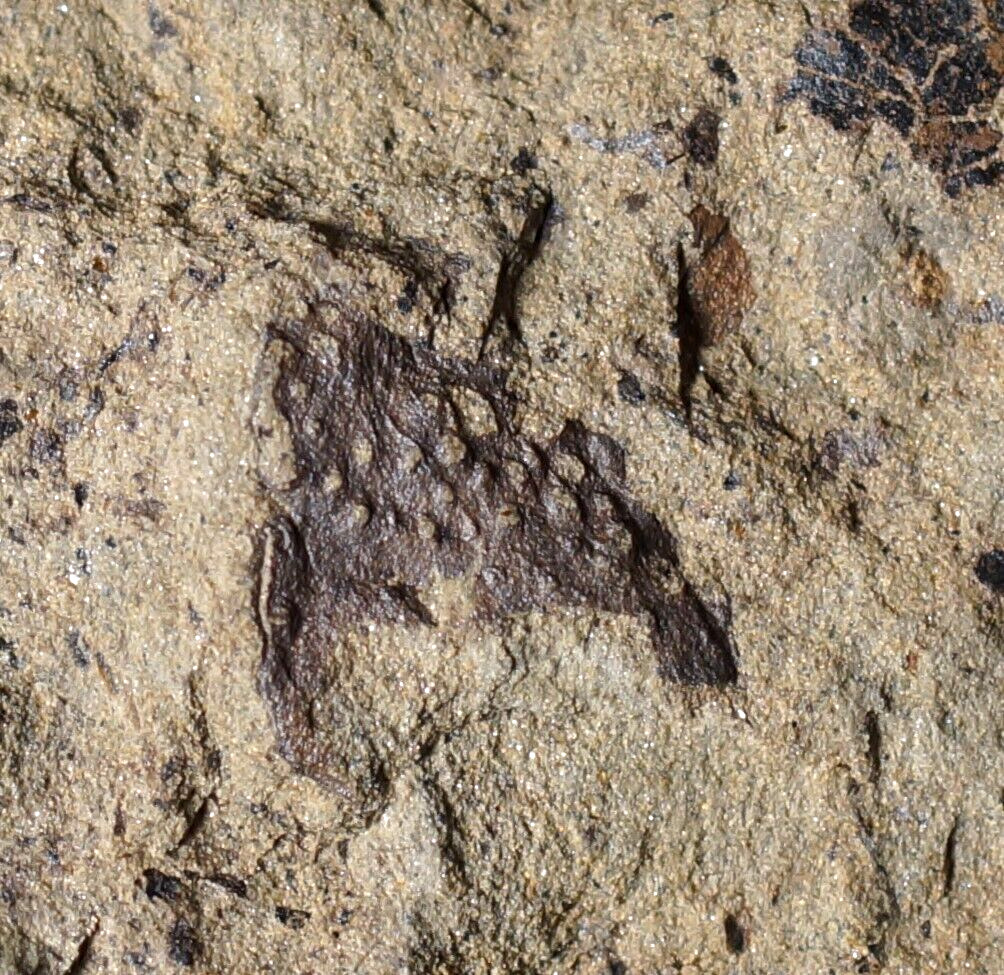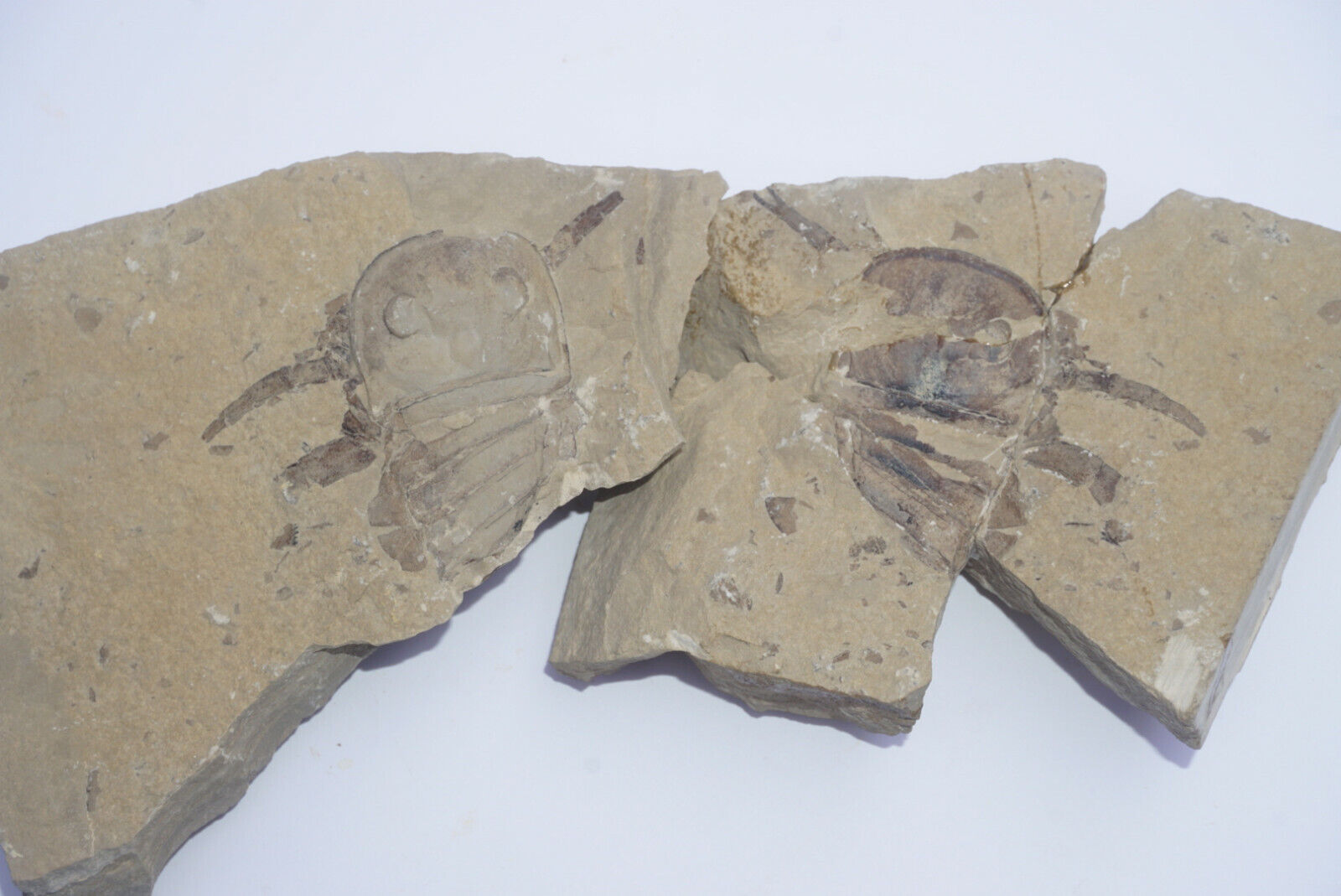-40%
Eurypterid Silurian - Fiddlers Green Formation, NY
$ 66
- Description
- Size Guide
Description
This is a 4 1/2" x 4" x 1" slab featuring a partial eurypterus remipes from the Fiddlers Green Formation in New York.Folks, as hard as this is, I've made the decision to liquidate my fossil and mineral business (BonznStonz: Fossils and Minerals). While I've enjoyed this business for the past 30 or so years, current economics, work and family requirements dictate that I do so. This has been a tremendous run and one that I've enjoyed every step of the way. I've meet some really great people, had an opportunity to follow my passion and enjoyed doing so all while raising my children. BonznStonz: Fossils and Minerals has served our family well and provided us with an opportunity to do something that we really enjoyed. We are forever indebted to our loyal customers, cherished friends and the entire rockhound community that's supported us over the years.
The decision to close was particularly difficult considering how much this affects my life. However, after exploring alternate options and the complicated recovery that our nation faces, liquidating our business is the best option.
Saying that, I will be posting a number of items for auction and Buy It Now until my inventory has been depleted. Understand that if I have a Best Offer listed, I will not respond to ridiculous offers. While I'm liquidating, that does not mean that I'm willing to sacrifice what I have.
Fast Facts about Sea Scorpions
Name:
Eurypterid (pronunciation: "yu-rip'tu-rid") - The common name is "
Sea Scorption
Taxonomy:
Phylum: Arthropoda - Subphylum: Chelicerata - Class: Merostomata - Subclass: Eurypterida - Order: Eurypterida(species)
Age:
Ordovician to Permian
Sea Scorpions lived approximately from 444 to 252 million years ago
Discovery:
Holland, 1764
Although they were thought to be fish fossils, Dr. S. L. Mitchill discovered the first Eurypterid specimens in 1818. The specimens were found in the Bertie Formation in New York.
Distribution:
Laurussia
Eurypterids are only found in coastal and inland sea deposits on the former supercontinent of Laurussia, which is North America, Europe, and the western part of Asia.
Body Size:
Most were under a foot in length, though some, like Pterygotus and Jaekelopterus grew over 8 feet long, which are the largest known arthropods to exist.
Diet:
They were probably oppurtunistic feeders, Preying on and/or scavanging on smaller animals, including smaller eurypterids.
Physical Appearance:
Eurypterids have a tail, legs, and pincher like appendages. They slightly resemble scorpions, and are thus called "Sea Scorpions". However, they are not related to true scorpions.
New York State Fossil:
Eurypterus remipes is the New York State Fossil!
Eurypterid - Sea Scorpion Facts and Information - The Details
Eurypterids, or "Sea Scorpions" are an order of ancient arthropods that lived in the Paleozoic era. These formidable Paleozoic predators appeared in the Ordovician and became extinct in the great Permian mass extinction. They seem to have reached their peak in the Silurian.
Eurypterids are not Crustaceans. The Eurypterid order belongs to the Chelicerata superclass. This class includes Horseshoe crabs, scorpions, and arachnids. Although they may be related to Scorpions, they are not scorpions, and are only called "Sea Scorpions" due to the scorpion like tail found on many of the Eurypterid genera.
Most Eurypterids inhabited very shallow brackish and fresh water environments, and some may have been able to walk on land. Their bodies were made of many segments and joints. Most Eurypterids were under 10" in length, but some genera, such as Pterygotus and Jaekelopterus could reach lengths of over 7 feet, and may have been the largest arthropods to ever live.
Eurypterids have a nearly global distribution, but are rare as complete fossils. There are only a few places on Earth were whole Eurypterid Fossils can be regularly found (New York and Ontario in North America). As a result, many type specimens are fragments, therefore, a number of genera and species may be nomen dubium or junior synonyms. As a result, the actual number of genera is uncertain, with publications reporting anywhere from 40 to 80 genera. The most well known Eurypterid is probably Eurypterus rempise, the state fossil of New York.
Sea Scorpions vs Real Scorpions
Sea Scorpions are not related to Scorpions. They just have a similar appearance.
True Scorpions appeared during the Silurian. The first ones seem to have been aquatic. These aquatic Scorpions can be found alongside Eurypterids in certain strata, such as the Phelps waterline in the Fiddlers Green formation in New York.
